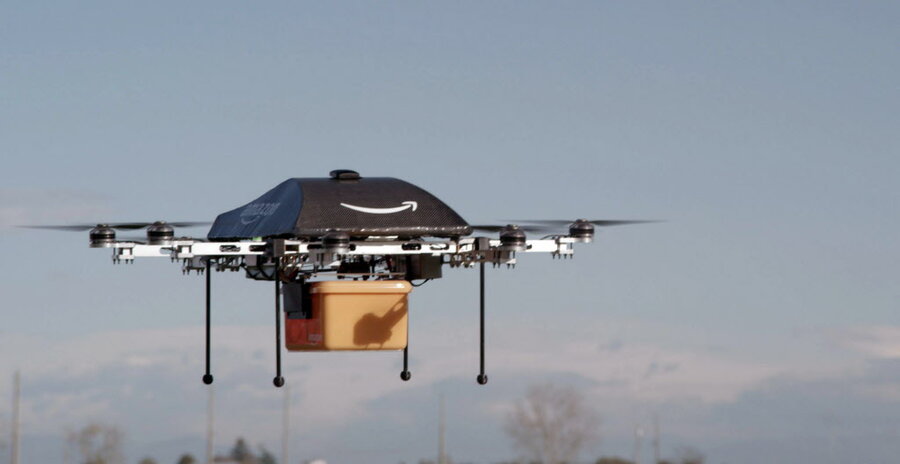Amazon reveals more details about Prime Air drone delivery service
Loading...
Amazon is continuing to make technological advances on the drone delivery service it calls Prime Air. In a recent interview with Yahoo! Tech, Paul Misener, Amazon’s vice president for global public policy, revealed more details about how the service might work, but not about how much it might cost or when it might be rolled out for customers.
“I can tell you, it is very real,” he emphasized. “We’ve beefed up a team at Amazon Prime Air that includes aeronautical engineers, roboticists, a former NASA astronaut. These folks are completely focused on making this a reality — and demonstrating that it is safe before we begin operations.”
The goal of Prime Air is to deliver products to consumers 30 minutes after they have placed an order on Amazon’s website - the high-tech equivalent of ordering a pizza. According to Amazon, the range of delivery has to be more than 10 miles, and the drones, which are expected to weigh about 55 pounds, can only deliver packages that weigh up to five pounds.
Amazon’s test drones have very different technical specifications than those sold to the general public for recreational purposes. Because Amazon’s customers live in a variety of different environments, Mr. Misener explained, they have been working to develop drones that can function in either hot, arid climes or damp, rainy ones.
“Our customers in the United States live in hot, dry, dusty areas like Phoenix, but they also live in hot, wet, rainy environments like Orlando, or up in the Colorado Rockies,” he said. “Likewise, obviously, our customers live in a wide variety of buildings… We want to be able to serve all of those customers. And it may take a different kind of a drone to best work in each one.”
Another key difference: Amazon’s drone fleet is highly automated, with sensors that enable them detect and avoid obstacles.
Amazon is well into the testing phase for these different drones, but there are some legislative hurdles that the company will need to overcome before it can implement the delivery service, namely, regulations on commercial drones established by the Federal Aviation Authority (FAA).
The FAA is notoriously strict on what allowances it gives for commercial drone use, and to whom. Amazon did not receive the FAA’s blessing to begin widespread drone testing until April of 2015, although it had been quietly testing its fleet of drones without FAA approval prior to that. Regulatory changes at the FAA over the next year and a half may make the application process easier.
While Amazon is one of the most visible companies testing drone delivery opportunities, it is not the only one. In October, Wal-Mart filed a petition with the FAA to begin testing a fleet of drones for their delivery potential, and in November, Google’s holding company Alphabet said its “Project Wing” drone delivery service would likely be able to deliver packages to customers by 2017.






